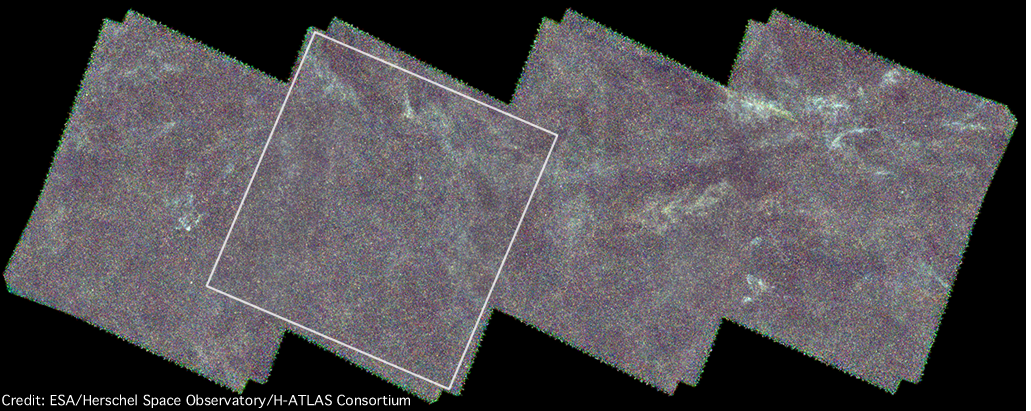First data release of the Herschel ATLAS
The Science Demonstration Phase (SDP) data from Herschel-ATLAS has been released to the astronomical community. This represents the largest public release of Herschel data so far and will be a powerful data-set for studies of galaxy evolution. Maps of 16 square degrees of sky in five bands (100, 160, 250, 350 and 500 microns) will be available for download along with the catalogues generated by the H-ATLAS team. These catalogues contain 6800 sources and also provide information about the optical counterparts for 2400 galaxies which have reliable identifications in the Sloan Digital Sky Survey. Redshifts and optical magnitudes from the u-K bands are presented courtesy of the GAMA (Galaxy and Mass Assembly) team.
The H-ATLAS SDP data have so far provided exciting results in many areas of astronomy ranging from local galaxies to distant active galaxies to nearby debris disks forming planets around stars. The power of H-ATLAS is its wide-area coverage which means we can pick up extremely rare objects as well as see many more normal galaxies closer to home. The quality and scale of the data have been staggering and have led already to more than 20 papers on just this small patch of sky, which is only 1/30th of the final H-ATLAS area. The team are excited about what they will find next.
"The H-ATLAS SDP data-set surpassed all our wildest expectations, to have such a large impact with only 3% of the survey data is simply unprecedented" said Dr Steve Maddox who has been heavily involved in the data reduction and source extraction. Professor Rob Ivison added, "The speed at which we were able to analyse data from a brand new telescope and release it to the public is a testament to the hard work and thorough preparations of the Herschel Instrument and Control teams as well as the H-ATLAS data reduction team."
Dr Edo Ibar helped create the maps from the PACS instrument, said, "Even with the great data from the Herschel Observatory, it's still a difficult process to get from the raw data taken by the telescope to the beautiful maps we have today. There were some glitches which meant that the standard way of doing things was removing some of our galaxies and we had to recover them. " He added, "Every galaxy counts!"
"Herschel's instruments have an incredible build quality" said Dr Simon Dye, . "They have survived a gruelling launch and a long journey to the telescope's observing point at 1.5 million kilometres away from Earth, and yet, the quality of data they are returning is as good as the quality measured in the lab. I feel privileged to be given the opportunity to work with this dataset."
"We hope that now astronomers who are not directly involved in H-ATLAS will dive into this data-set and exploit the wealth of science which is bursting to be done with it" said Dr Loretta Dunne.
The SPIRE maps for the SDP release were made at Cardiff University (see the boxed area below from the complete GAMA 9 hour field) and the PACS maps were made by a team of institutes across the world, led by the Astronomy Technology Centre, Edinburgh. The catalogues and optical associations were produced by the University of Nottingham.
To download our SDP catalogue go here. We have also created a search tool for extracting the results, allowing quick searches by position in the Herschel ATLAS SDP map and this can be searched using an SQL query form. You can also extract cutout images (coming soon).
